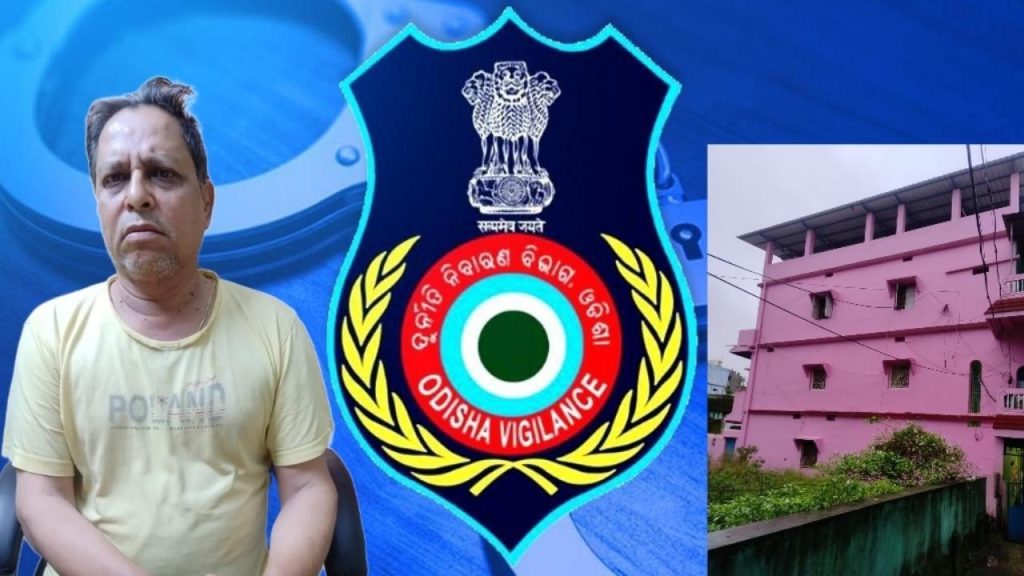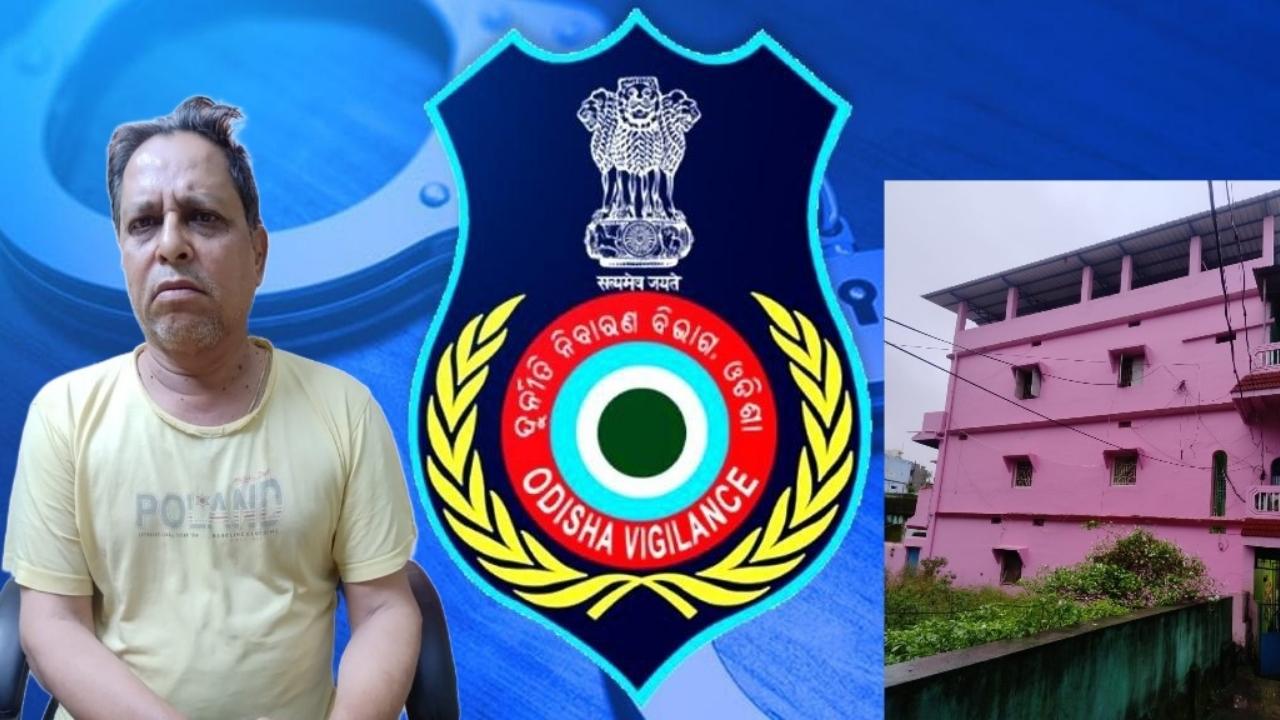In a bold and shocking move, the Odisha Vigilance Department recently conducted a series of well-coordinated raids targeting a Deputy Ranger in the Jeypore Forest Range. What they uncovered has left the state and beyond astounded—millions in cash, gold biscuits, coins, and multiple properties seemingly amassed through illicit means. This high-profile raid shines a spotlight on corruption within India’s forestry and environmental sectors and sends a strong message that no one, regardless of their position, is beyond scrutiny.
But this isn’t just about one person’s downfall—this case opens the door to deeper discussions about the fight against corruption, the role of vigilance agencies, and what steps need to be taken to ensure transparency and accountability across India.

In this article, we will break down the details of the raid, uncover what the vigilance officers discovered, and explore what this means for the state of Odisha and the broader battle against corruption. By the end, you’ll gain a better understanding of the actions taken, the implications, and what it could mean for those working in similar roles.
Odisha Vigilance Raids Deputy Ranger
| Key Findings | Details |
|---|---|
| Cash Seized | ₹1.44 crore (Rs 1.4 crore) found in a concealed chamber at Jeypore flat. |
| Gold Assets | 4 gold biscuits (10 grams each) & 16 gold coins discovered. |
| Properties | Multiple flats in Jeypore, Bhubaneswar, and a building on ancestral land. |
| Raided Locations | 6 locations across Odisha linked to Deputy Ranger Rama Chandra Nepak. |
| Role of the Suspect | Deputy Ranger-cum-In-Charge Ranger at Jeypore Forest Range, earning ₹69,680/month. |
| Vigilance Action | Investigation ongoing to probe legality of assets and potential misconduct. |
For further details, refer to the official Odisha Vigilance Department website.
The Odisha Vigilance raid on Deputy Ranger Rama Chandra Nepak is a significant event that highlights the ongoing battle against corruption within India’s public sector. The discovery of ₹1.4 crore in cash, gold biscuits, and numerous properties raises questions about the ethical conduct of government officials entrusted with the protection of the state’s valuable natural resources.
While this case centers on one individual, it serves as a reminder that vigilance is needed at every level of government to maintain integrity, transparency, and accountability. The actions of the Odisha Vigilance Department set a powerful example of how committed agencies can expose corruption and pave the way for a cleaner, fairer system.
The Story Behind the Raid
Rama Chandra Nepak, a Deputy Ranger in the Jeypore Forest Range of Odisha’s Koraput district, had been living a double life, one of service and apparent honesty on the outside, while secretly building an empire of wealth. As a government employee in a critical environmental sector, Nepak’s job was to protect forests and manage wildlife, a responsibility that comes with the trust of the public. However, a recent investigation launched by the Odisha Vigilance Department has shattered that trust.
On July 25, 2025, a coordinated effort by the Vigilance officials led them to raid six different locations linked to Nepak. What they uncovered was nothing short of astonishing: over ₹1.4 crore in cash, gold biscuits and coins, and several properties scattered across Odisha. But how did this happen, and what does it mean for the future of public officials’ accountability in India?
Understanding the Raids
The raid, which took place across multiple locations, uncovered disproportionate wealth that could not be justified by Nepak’s official salary or known sources of income. The most striking discovery was a hidden stash of ₹1.44 crore in cash found at his flat in Jeypore. The Vigilance Department also uncovered four gold biscuits weighing 10 grams each and 16 gold coins, clearly marking Nepak as someone living well beyond his means.
Nepak had been employed with the Odisha Forest Department since 1989, working his way up the ranks. Despite only earning ₹69,680 per month as a Deputy Ranger, his amassed wealth pointed to illicit financial activity. This discovery has raised serious questions about the methods by which Nepak, and others like him, managed to accumulate such wealth without detection.

What Was Discovered?
Let’s dive deeper into the specific assets and wealth that were uncovered during this landmark raid:
1. Massive Cash Hoard
The Vigilance Department made one of the largest cash seizures in recent memory. In a hidden chamber within Nepak’s flat at Golden Height Residential Apartment, they discovered ₹1.4 crore in cash—concealed carefully, away from the eyes of the public. This large sum of money in cash raised alarms, considering Nepak’s government salary was far below what would justify such an amount.
2. Gold Biscuits and Coins
Gold is often used as a sign of wealth and stability, and Nepak was no exception. The Vigilance Department discovered four gold biscuits and 16 gold coins. The total weight of the gold came up to an impressive 400 grams. Given the price of gold fluctuates, the value of the seized gold can vary, but it certainly added to the scale of Nepak’s unaccounted wealth.
3. Properties Across Odisha
In addition to the cash and gold, Nepak also held multiple properties. These included flats in the bustling cities of Jeypore and Bhubaneswar. The most suspicious find was a building constructed on what seemed to be ancestral land in Jeypore Town, raising questions about how Nepak managed to fund such expensive acquisitions without any legitimate means.
4. Evidence of Corruption
The overall picture painted by the raid points to serious corruption. The sheer scale of wealth and the lifestyle that Nepak was living seemed completely out of line with the position he held in the Odisha Forest Department. Investigators are currently looking into whether Nepak had used his position to siphon off money or misappropriate resources meant for forest conservation.
How the Vigilance Department Conducts These Raids
The Vigilance Department’s job isn’t just about investigating a suspect’s assets; it’s a detailed and complex process that involves multiple steps:
1. Gathering Intelligence
Before launching a raid, the department gathers intelligence from various sources. This could include tip-offs from informants, audits, or whistleblower reports. In Nepak’s case, it is likely that a whistleblower, or discrepancies in asset declarations, sparked the investigation.
2. Surveillance
Once intelligence is gathered, surveillance is conducted to verify the suspect’s movements and activities. This could involve monitoring bank transactions, tracking vehicles, or even observing the suspect’s lifestyle.
3. Planning the Raid
The raid is carefully planned to avoid alerting the suspect. Authorities must secure warrants, ensure they have enough personnel, and be ready to handle any surprises that might arise during the operation. In this case, the Vigilance Department raided six locations simultaneously.
4. Asset Seizure
During the raid, officers look for any signs of wealth that might not match the suspect’s income. This includes physical cash, gold, luxury items, or other high-value assets. Once seized, the assets are documented, photographed, and stored as evidence.
5. Ongoing Investigation
After the raid, the real work begins. Investigators now try to trace the origins of the wealth. They examine the suspect’s financial history, transactions, and any links to other illegal activities, such as bribery or embezzlement.
Implications for Public Service
Nepak’s case isn’t just an isolated incident. It raises significant questions about the effectiveness of oversight in the public sector. Here’s why:
1. Integrity in Government Jobs
The raid highlights a deep concern about corruption in government jobs, especially in positions that involve the management of public resources like forests and wildlife. Officials in such roles are entrusted with protecting valuable natural resources, yet some may exploit their positions for personal gain. This case serves as a reminder of the importance of having strong checks and balances.
2. The Role of Vigilance Agencies
The Odisha Vigilance Department’s action is a clear sign of its growing role in fighting corruption within the state. By conducting raids and seizing ill-gotten wealth, these agencies act as watchdogs, ensuring that public servants are held accountable for their actions. This encourages transparency and sets an example for others.
3. Public Awareness
The raid has sparked significant media coverage, raising awareness among the public about corruption in government departments. It also highlights the importance of citizens being vigilant and reporting any suspicious activities to authorities. Public awareness is crucial in maintaining the integrity of government institutions.
Odisha DFO Under Scrutiny After Rs 50 Lakh Deposits Detected in Accounts
Odisha Holds 44 Bengali Migrant Workers as Citizenship Verification Process Continues
Odisha Government Takes Action Against Inefficiency with Forced Retirements
FAQs
Q1: What is the role of the Odisha Vigilance Department?
The Odisha Vigilance Department is responsible for investigating corruption and illegal practices by public servants in the state. They conduct raids, seize assets, and work to ensure government employees follow ethical and legal guidelines.
Q2: How do public officials like Deputy Rangers accumulate illicit wealth?
Public officials may accumulate illicit wealth through embezzlement, bribery, misappropriation of funds, or other corrupt practices that exploit their position for personal gain. This often happens in departments that control valuable resources, like forestry.
Q3: What happens after a raid by the Vigilance Department?
After a raid, the authorities assess the evidence, including seized assets. Investigations are conducted to trace the origins of the wealth and determine if there was corruption involved. If necessary, legal action is taken.





